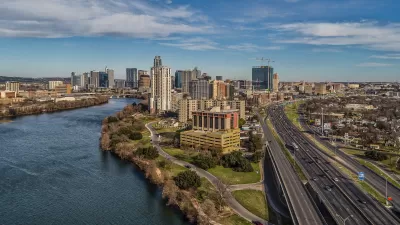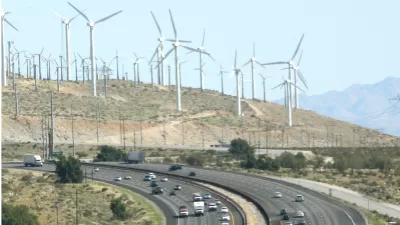Phil Taylor of the New York Times writes about an ensuing battle between a Montana wind power transmission project, backed by eminent domain rights, and Montana landowners, fighting for cultural conservation of their land.
Phil Taylor reports on the conflict between Larry Salois, a Montana native who owns property on a Blackfeet Indian Reservation, and Tonbridge Power Inc., with its 215-mile Montana-Alberta Tie Line project: a $209 million power line project to stretch all the way to Canada, and possibly the West Coast.
"The company, backed by a new state law passed in spring that allows private power line developers to condemn property, is asking state judges to grant easement rights across more than 30 miles of land so it can continue construction of the high-voltage line, which would run from Great Falls to Lethbridge, Alberta."
Salois, however, and other landowners like him who oppose the project, are fighting the state's new eminent domain law and condemnation practices. However, "their opposition illustrates a major challenge transmission projects face across the West in finding suitable pathways for new lines that can connect remote renewable energy resources to burgeoning populations in the Southwest and West Coast."
FULL STORY: Conservation Concerns, Landowner Opposition Stifle Mont. Transmission Project

Planetizen Federal Action Tracker
A weekly monitor of how Trump’s orders and actions are impacting planners and planning in America.

Map: Where Senate Republicans Want to Sell Your Public Lands
For public land advocates, the Senate Republicans’ proposal to sell millions of acres of public land in the West is “the biggest fight of their careers.”

Restaurant Patios Were a Pandemic Win — Why Were They so Hard to Keep?
Social distancing requirements and changes in travel patterns prompted cities to pilot new uses for street and sidewalk space. Then it got complicated.

Platform Pilsner: Vancouver Transit Agency Releases... a Beer?
TransLink will receive a portion of every sale of the four-pack.

Toronto Weighs Cheaper Transit, Parking Hikes for Major Events
Special event rates would take effect during large festivals, sports games and concerts to ‘discourage driving, manage congestion and free up space for transit.”

Berlin to Consider Car-Free Zone Larger Than Manhattan
The area bound by the 22-mile Ringbahn would still allow 12 uses of a private automobile per year per person, and several other exemptions.
Urban Design for Planners 1: Software Tools
This six-course series explores essential urban design concepts using open source software and equips planners with the tools they need to participate fully in the urban design process.
Planning for Universal Design
Learn the tools for implementing Universal Design in planning regulations.
Heyer Gruel & Associates PA
JM Goldson LLC
Custer County Colorado
City of Camden Redevelopment Agency
City of Astoria
Transportation Research & Education Center (TREC) at Portland State University
Camden Redevelopment Agency
City of Claremont
Municipality of Princeton (NJ)





























